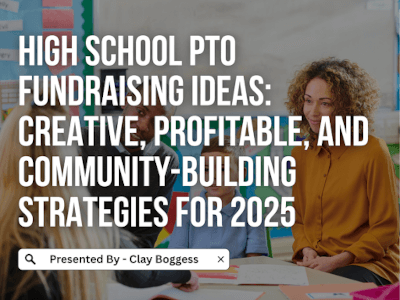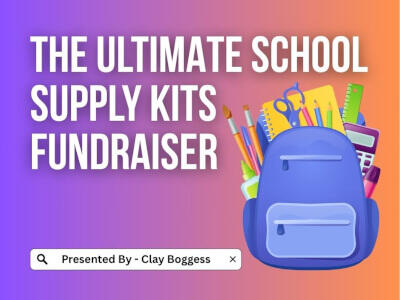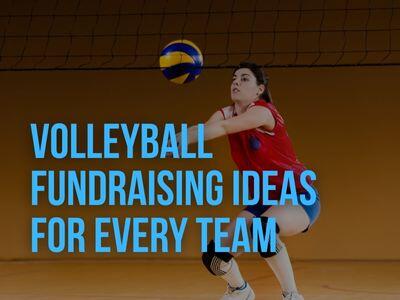
Three powerful yet simple high school fundraising strategies.
If you can present your case, give your students the sales tools they need, and inspire them to sell, there's no reason they won't succeed.
Sponsors tend to leave out at least one of these three things, but more often than not, they don't provide the means to help make selling easier.
Your success depends on your ability to find creative high school fundraising ideas. You must make your case about your goals and expectations in your kickoff meeting. If you've selected the right product to sell, you should be able to tell your students why potential customers will be interested in purchasing it.
Your incentive plan should inspire your group to push toward their sales goals. Participating in your fundraiser because your students may feel obligated towards the group and the cause can also help.
So you've presented your purpose and inspired your group to sell. What else do you need to do?
If you want your students to succeed, you must do more to prepare them. Here are three proven strategies to help them maximize their selling efforts from day one.
1. Use Fundraiser Prospect Lists
Only your most highly motivated students will start considering who they plan to approach before the sale starts. So why not get all of your students to think this way?
Your kickoff meeting is the perfect time for your group to use prospect lists. This is where your students create a list of people they feel will likely buy from them. It's a way to help them stay organized by using an easy-to-follow tracking system.
Those who come to mind first will probably be the most accessible people to talk to. For example, family members. This is important because it helps establish both confidence and sales momentum.
Additional people might include neighbors, other family members and friends, teachers and coaches, and fellow churchgoers. The longer the list, the more potential sales they can make. And they can keep adding to their list any time during the sale. An excellent initial list might include 10 to 15 names.
The point is to write it down and then track it.
Plan to set aside 5-10 minutes during your kickoff meeting to ask your students to prepare a thorough prospect list. Then make sure they update what happens with each prospect as the sale progresses.
It will also be essential to check in with them periodically during the sale. Tell them you'll also want to check their lists, but encourage them on their progress.
Learn how to apply prospecting to a discount card fundraiser
2. Give Your Students a Sales Pitch
Some will argue that letting your students be spontaneous and natural is better. That can be good and not so good. How your students approach customers and what they say can have an impact. Granted, some students will have more skill in this area than others.
Offering an easy-to-implement standardized sales pitch will help get everyone up to par and on the same page.
At the same time, there should be a balance between spontaneity and some structure. Students can still put their unique spin on a sales presentation that will help them increase sales more effectively.
Be sure to speak with your students about approaching people during your kickoff meeting. Many high school students will want to take the easy road by saying, "Want to buy something?" While this may be off the cuff, it is not very effective. Most prospective buyers want to know three things:
- Who are you?
- What organization are you with?
- Why are you selling?
That's why we recommend our NOW Selling Method. It's both simple and effective. The "N" stands for 'Name' and tells the person who you are. The "O" is short for 'Organization' and addresses who you represent. And the "W" answers the 'Why' part.
It's essential that your students introduce themselves and that they let potential customers know why they are selling. Here's an example:
If you're a softball player at Smith High School, keep it simple: "My name is Suzy Jones with Smith High School softball, and we're raising money for new equipment."
The next step is to hand over the brochure, take a step back and smile. Don't say a word. Let the customer review the information and decide.
The brochure will sell itself if you're selling a great product at a reasonable price. And regardless of the outcome, don't leave without saying thank you. This will help set you apart as a professional.
Have your students partner up and practice their sales pitch during the kickoff. You can even provide an incentive to a couple of students who are willing to roll play in front of the group. For example, consider setting your fundraiser in motion by purchasing an item from each of them on the spot.
3. Set High School Fundraising Goals
Outstanding high school fundraising ideas always help your students become more effective at selling by making the process easier. For example, if you've determined that each student needs to sell ten items, you might want to communicate a day 1 goal of 2 or 3 items.
We recommend also meeting with your group again at the midway point. By then, the minimum number of items sold should be 6 or 7.
Breaking your sale down like this does three things:
- It tells your students to focus on the 'hear and now' rather than the larger goal at the end.
- You're holding your students accountable to staying focused and on track.
- You're collecting important feedback about how your sale is progressing. This allows you to make needed adjustments before your sale's over and it's too late.
And if you want strong sales, you have to create a sense of urgency in your students' minds. Be sure to inform them about your plans to track their sale at your kickoff and the day before each checkpoint. Nothing sets the tone better than meeting again the first day after your kickoff.
For more information, see How to Track Your Fundraising Progress.
If you let your students know you'll check on them, they'll be more apt to keep up with their selling. The extra work you put in will be time well spent. You will likely reap the benefits of a successful high school fundraiser.
Author Bio
Clay Boggess has been designing fundraising programs for schools and various nonprofit organizations throughout the US since 1999. He’s helped administrators, teachers, and outside support entities such as PTAs and PTOs raise millions of dollars. Clay is an owner and partner at Big Fundraising Ideas.



